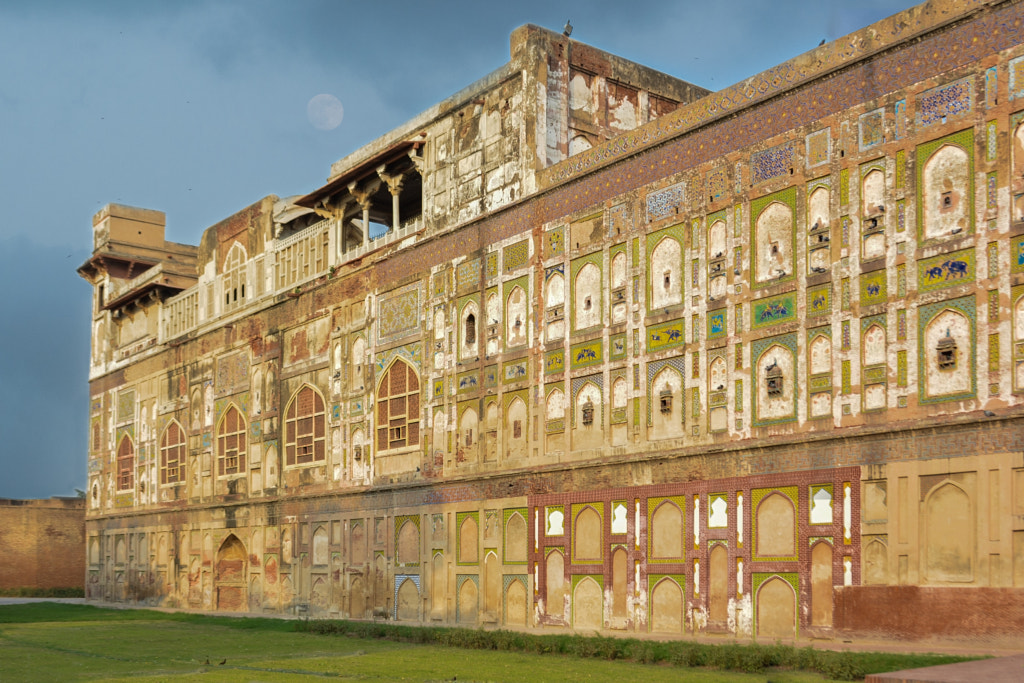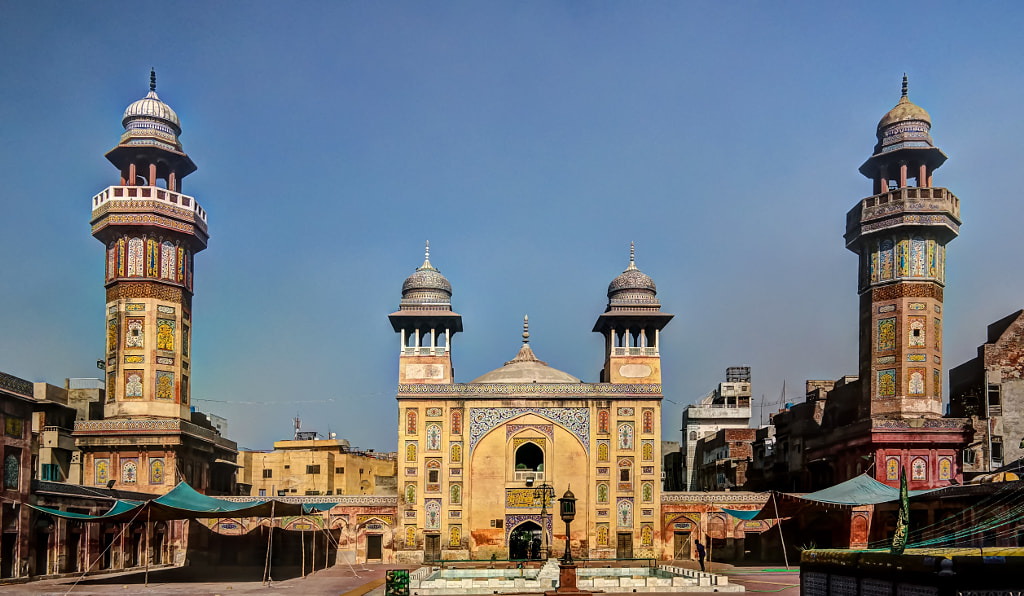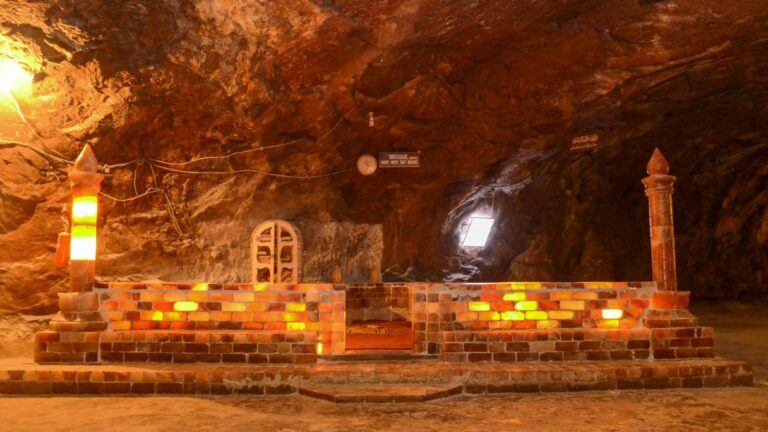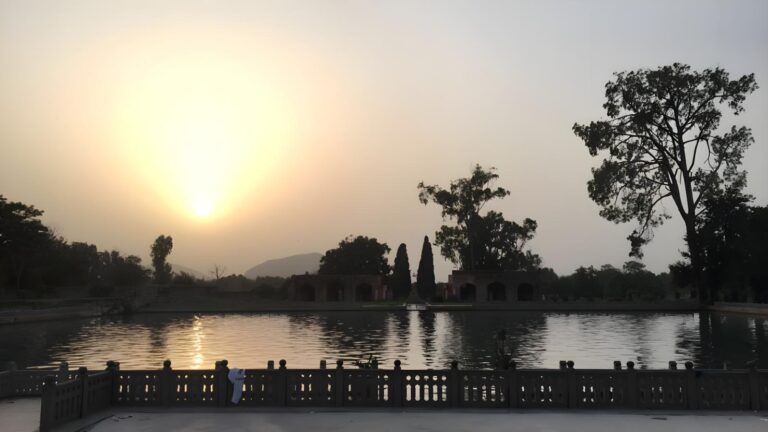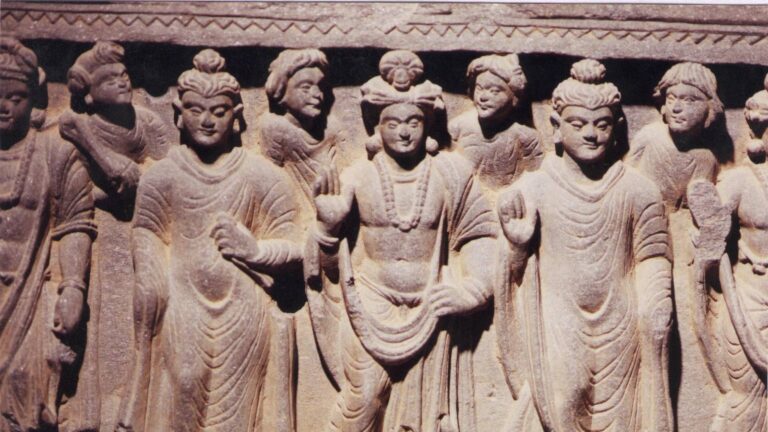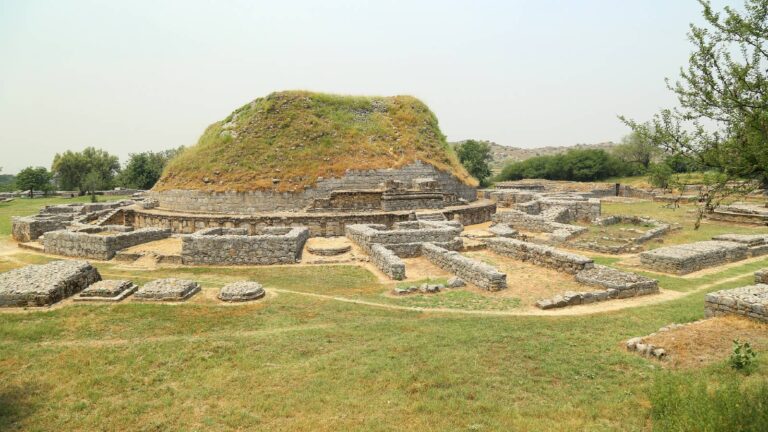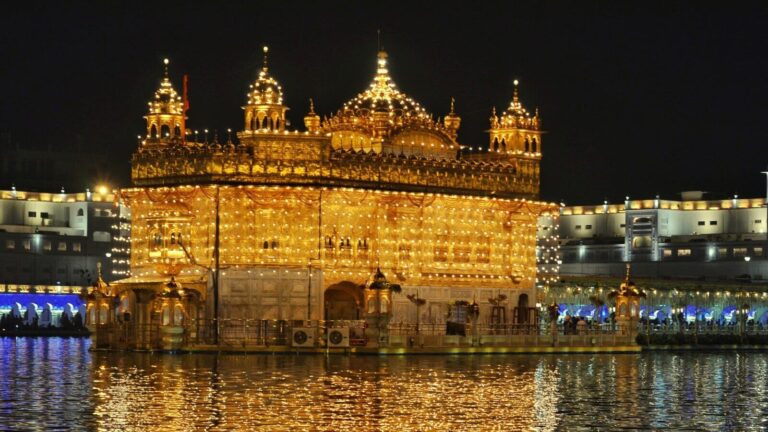Main image: Idaudpota, CC BY-SA 4.0, via Wikimedia Commons (cropped image)
Getting There
Buses, rickshaws, taxis and ride-hail services like Uber and Careem can all easily bring travellers to Delhi Gate, a popular place to start walking tours of Lahore Walled City.
What to Expect
To the northern end of the Walled City is Lahore Fort, a citadel filled with stunning Mughal and Indo-Islamic architecture spread across 20 hectares and built in 1566 by Emperor Akbar. The fort’s iconic Alamigiri Gate faces the Badshahi Mosque, completed in 1673 by the Mughal Emperor Aurangzeb in a style heavily influenced by Persian architecture.
Topped by three majestic white onion domes over a red sandstone structure with marble inlay, the Badshahi Mosque is Lahore’s most recognisable building. The massive courtyard enclosed by single-aisled arcades extends for 276,000 square feet and can accommodate 100,000 worshippers during the height of Eid al-Fitr celebrations.
Inside the Walled City itself is another stunning and older mosque, Wazir Khan, completed in 1641 by the Mughal Emperor Shah Jahan. With its stunning faience tile work, known as kashi-kari, and Mughal-era frescoes, it is one of that period’s most painstakingly decorated mosques. Just 260m away is the Delhi Gate, one of the Walled City’s six remaining entrances facing eastward to India.

